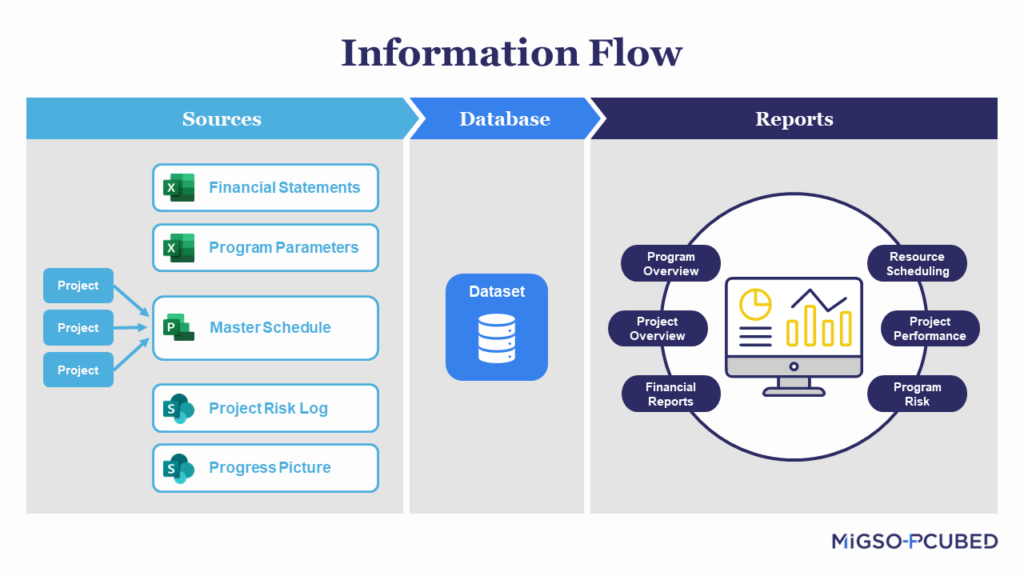Digital PMO Setup for a non-profit in Canada
- Public Sector, PMO & Project Delivery
The MP team collaborated with a prominent non-profit social housing provider in Canada. They offer affordable, safe, and dignified housing while promoting respect and fairness. As the largest social housing provider of their region, they manage thousands of units which are vital to local housing needs. The corporation secured funding for a multi-year housing unit revitalization program. Numerous projects that align with the goal of renovating and repairing the units have already been kicked off.
This marks the corporation’s first venture into such a substantial, multi-year program, presenting both challenges and opportunities. The challenges associated with undertaking a complex multi-year program require a strategic and well-considered project management approach, which is precisely where the MP team’s expertise comes into play.
Table of Contents
Challenge
The Social Housing Provider (SHP) was able to raise $170+ Million from various sources that were to be used for repair and renovation of its aging housing portfolio. The program was in its third year of the eight total within which the money raised was to be utilized.
After an intensive workshop with the Executive Management Team, the senior managers, and the project managers, the team was able to identify some of the challenges faced:
- Harmonization of tools and data: Typical project profiles at the SHP are small to medium and relatively simple. With these new, more complex projects underway, their tools were no longer suitable.
- Standardization of Project KPIs: The SHP’s diverse project portfolio made it difficult to measure project performance uniformly.
- Visibility into Project progress: Project progress data was scattered across local servers and individual laptops, hindering visibility.
- Standardization of reporting to Funding Stakeholders: The SHP’s funding requirements necessitated time-consuming data compilation due to dispersed data sources and formats.
- Interdepartmental Communication: Efficient cross-departmental communication became crucial as long-term projects affected day-to-day maintenance operations.
This situation is not unique to this particular organization, these challenges are common among non-profits, startups, and companies or departments that receive additional funding for a dedicated multi-year project or program. These challenges come up because there is a fundamental change in the project profile (larger scope, bigger budget, higher complexity) that is being managed and the existing infrastructure and processes are not equipped to handle it.
The MP team was selected by the SHP because our consultants come from diverse backgrounds in project management with extensive experience in helping other companies streamline their processes, including setting up new PMOs and implementing digital solutions.
Thus, the MP team was brought in by the SHP team to set up a Project Management Office (PMO), to gain better visibility into the program, and ultimately to get the program back on track.
Solution
With the main objective of setting up a PMO, the MP Team first conducted a workshop with all relevant stakeholders, and the team determined that the optimal way was to set up a digital PMO. A digital PMO offers the project management team a central repository where data processing and analysis are coupled with automation, thus allowing the PMO to understand the whole picture and make effective decisions.
The MP team’s first step was to create standardized tools and centralized data collection followed by the automation of data synthesis and report creation.
Harmonization of Tools and Data
In this instance, after analyzing the enterprise architecture, the MP team concluded that the best location for all PMO data would be SharePoint. This would allow all the stakeholders easy access to track and analyze project data.
To harmonize the data, the MP team first consolidated all the project schedules into one. Then with all the data in one place, they were able to build a dynamic KPI dashboard. Nevertheless, the team needed to be creative and innovative in order to work through some technical challenges that arose due to the use of legacy project management software. The MP team overcame this challenge using an innovative workaround that made use of process automation tools. The MP team also overcame issues of linking reports with the source data being stored on the on-premise servers by migrating all the relevant data sources onto the cloud.

Setting up standardized KPIs
The MP Team had extensive discussions with all stakeholders to agree upon a set of Key Performance Indicators (KPI) that would be used to measure the progress of projects. Most of the KPIs agreed upon were standard metrics tracking financial health, schedules etc. However, the MP team also developed a custom KPI for the program that was used to track impact at an individual housing unit level.
This standardization of metrics allowed for greater efficiency, control, and communication of the project status.
Visibility into Projects
To provide various stakeholders (The PM Team, Senior Management Team, Executive Management Team, and Project Sponsors) with greater project visibility, the MP Team took the following steps:
- Individual Project Plans: Create individual project plans to facilitate planning and progress tracking.
- Progress Updates: Establish a common repository for project managers to provide project updates, risks and progress.
- Master Program Schedule: Create a Master Schedule to track overall progress and plan resource allocations efficiently.
- KPI Tracking Dashboards: Develop dashboards to monitor Program Level and Project Level progress using agreed-upon Key Performance Indicators (KPIs) such as financial performance, timelines etc.
- Resource Allocation & Insights: Utilize the master schedule data and Power BI Dashboards to plan resource allocation and to better communicate across departments.
Training
One of the most important aspects of MP’s delivery and what sets it apart from others is the emphasis on setting up the client for long-term and sustainable success. That includes training their team on any new processes, properly transferring knowledge and building documentation. In this case, the MP team provided extensive group and one-on-one training sessions with the client’s PM team.
The aim of the training was to ensure that the team had sufficient skills using MS Project. Then to ensure the client team’s full support after the end of the engagement, the MP team also created extensive documentation and videos so that the client PM team always had resources to fall back on.
The MP team also conducted training and handover sessions to ensure that the new PMO would be up to speed using Power BI as well as performing maintenance tasks on the dataset.
Benefit
The digital PMO brought significant efficiency gains to SHP’s project management. By harmonizing tools and data, it enabled the management of more complex projects with ease. This streamlined approach allowed for smoother project execution and ensured that resources were used effectively. Standardized KPIs provided uniform project performance measurement across a diverse portfolio, enabling better decision-making.
One of the most notable benefits was the enhanced visibility into project progress. Centralized data storage and automated reporting reduced time spent on data compilation, resulting in significant time and cost savings. The digital PMO also facilitated effective cross-departmental communication, reducing redundant expenditures and ensuring that repair and renovation projects aligned seamlessly with daily maintenance activities. With comprehensive dashboards and reporting tools, senior management, project sponsors, and operations departments gained real-time insights, enabling efficient resource planning and allocation.
Extensive training and resources empowered SHP’s project team to utilize tools like MS Project and Power BI effectively. This empowerment ensured long-term success and self-sufficiency. Customized KPIs allowed for tracking project impact at an individual housing unit level, providing unique insights. Additionally, dynamic Power BI dashboards and one-page status reports strengthened communication with program sponsors, enhancing transparency and accountability in project management.
In summary, the digital PMO implementation at SHP led to increased efficiency, improved visibility, and empowered project teams, resulting in successful project outcomes, cost savings, and effective communication with stakeholders.
This article was written by Sanket SHAH and Javier MEDINA.
Loved what you just read?
Let's stay in touch.
No spam, only great things to read in our newsletter.



